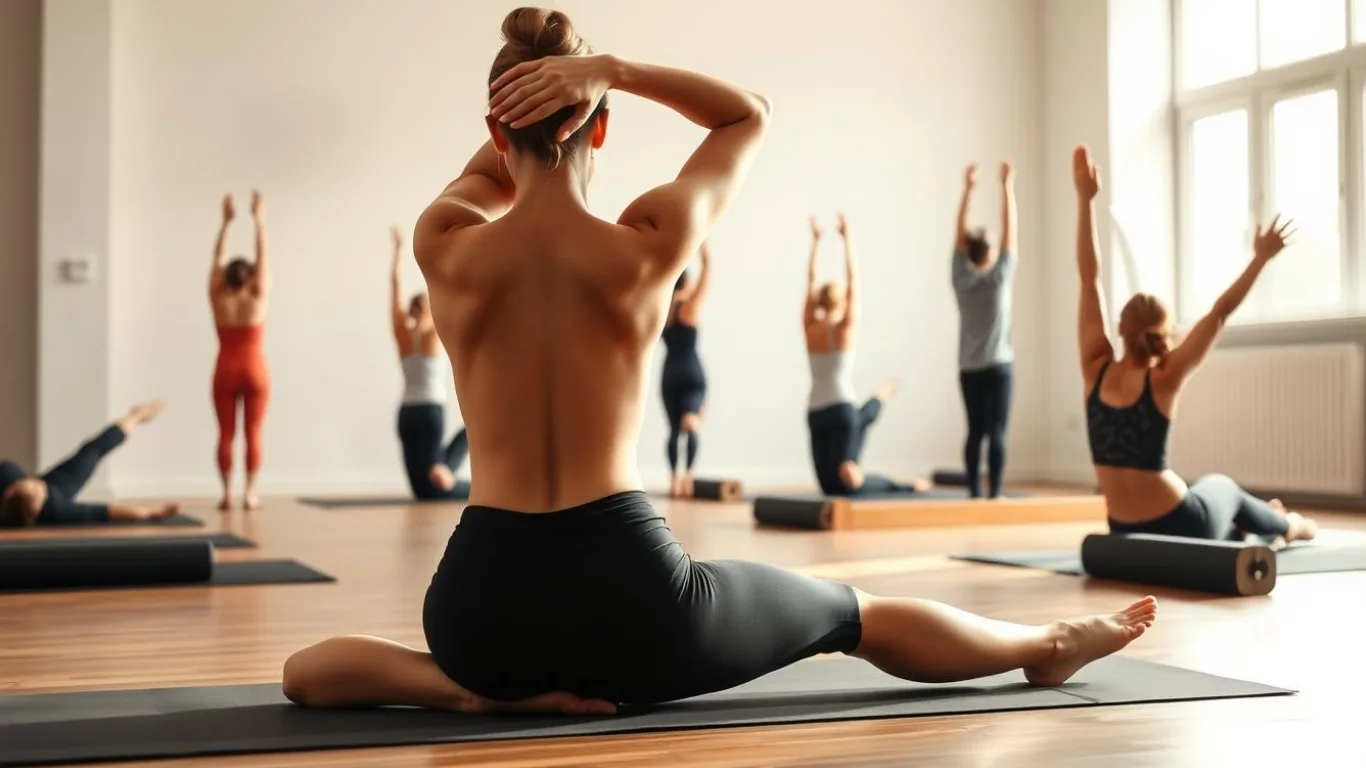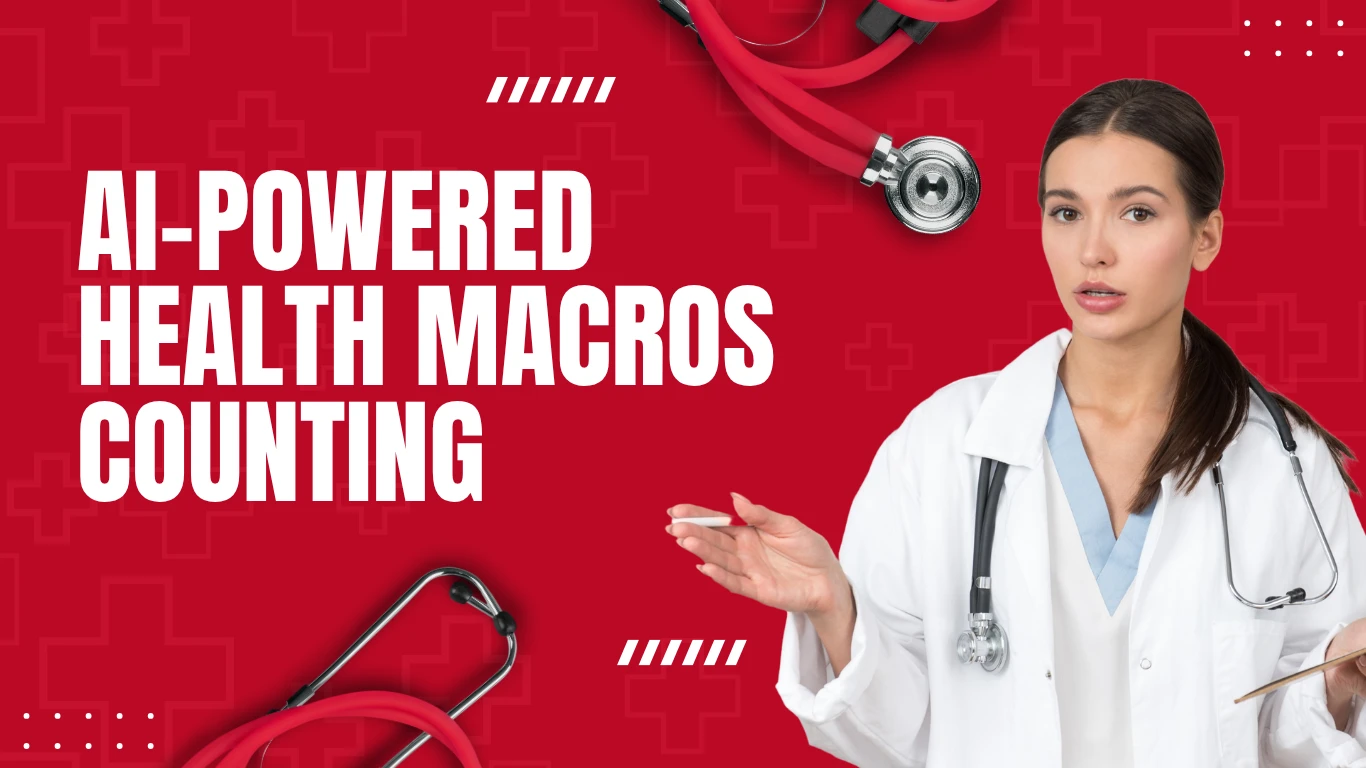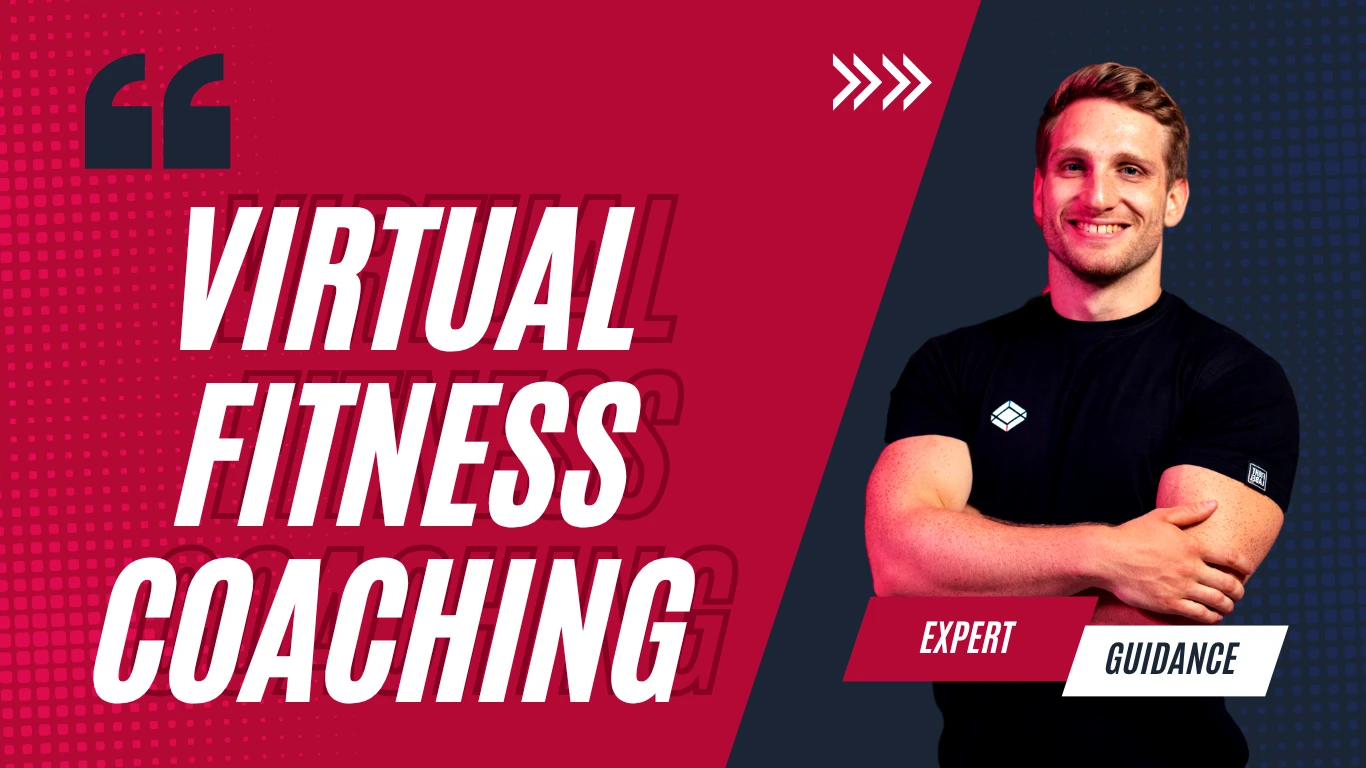For core strength and flexibility, Pilates is a quite efficient kind of workout with several advantages. Active recovery Pilates helps you to increase your whole physical fitness, correct your posture, and lower your chance of injury.
The Pilates approach emphasises body awareness, increased flexibility, and strengthening of the core. For those trying to raise their general health and well-being, it is thus a perfect kind of exercise.
Pilates’s ideas and techniques can assist you to better realise how this workout program might support you in reaching your fitness objectives, including better core strength and flexibility.
The Foundations and Benefits of Pilates
Though its roots go deeper than current exercise fads, Pilates has become a mainstay in modern fitness. Understanding the background and fundamental ideas of the approach can help one to really enjoy it.
The History and Philosophy of Joseph Pilates
Early in the 20th century Joseph Pilates created this exercise program. To provide a whole approach to physical fitness, he mixed bodybuilding, gymnastics, and yoga. With an eye towards general well-being rather than only physical power, his worldview focused on the blending of body, mind, and spirit.
Six Core Principles of the Pilates Method
Six basic ideas direct the Pilates approach: centring, concentration, control, precision, breath, and flow. These ideas cooperate to guarantee proper and safe performance of activities. While attention and control aid to preserve correct form, centring calls on using the core muscles. Targeting the right muscles depends on precision, hence breath helps the movement. At last, flow links the activities into a seamless, ongoing practice.
| Principle | Description |
| Centering | Engaging the core muscles for stability |
| Concentration | Maintaining focus on the exercise |
| Control | Controlling the movements for precision |
| Precision | Performing exercises with exactness |
| Breath | Using breathing to support movement |
| Flow | Connecting exercises into a smooth practice |
Physical and Mental Benefits Beyond the Core
Pilates is well known for building the core, but its advantages go much beyond. It increases balance, agility, and general physical ability. Pilates also helps with mental aspects including better concentration and less stress. The method’s emphasis on controlled breathing and motions helps to quiet the mind and improve mental clarity.
Understanding Core Strength Development Through Pilates Active recovery
Maximising the benefits of Pilates depends on knowing how it helps build core strength. Basic to all physical fitness, core strength affects posture, balance, and the efficacy of other workouts.
Anatomy of the Core Muscle System
The core muscle system encompasses more than just the abdominal muscles; it includes the deep stabilizing muscles that support the spine and pelvis. These muscles work together to provide stability and facilitate movement.
The core anatomy is complex, involving muscles such as the transverse abdominis, multifidus, and pelvic floor muscles. Engaging these muscles effectively is crucial for achieving core strength.
How Pilates Activates Deep Stabilizing Muscles
Pilates is designed to activate the deep stabilizing muscles through controlled movements and precise muscle engagement. By focusing on these muscles, Pilates helps improve posture, reduce the risk of injury, and enhance overall physical stability.
The Connection Between Proper Breathing and Core Engagement
Proper breathing is integral to core engagement in Pilates. Breathing techniques help initiate the engagement of the core muscles, promoting effective and efficient movement. By synchronizing breath with movement, individuals can maximize the benefits of their Pilates practice.
Effective core strength development through Pilates requires a combination of proper breathing, controlled movement, and engagement of the deep stabilizing muscles. By understanding and applying these principles, individuals can enhance their core strength and overall physical fitness.
Enhancing Flexibility with Pilates Techniques
Enhancing flexibility is a core benefit of Pilates, achieved through a combination of dynamic movements and mindful stretching. This approach not only improves range of motion but also reduces muscle tension, making it an effective method for individuals seeking to enhance their flexibility.
Dynamic vs. Static Stretching in the Pilates Method
Pilates incorporates both dynamic and static stretching techniques to enhance flexibility. Dynamic stretching involves moving your joints through a range of motion while keeping your muscles active. This type of stretching is excellent for preparing the body for exercise and improving flexibility during movement.
Static stretching, on the other hand, involves holding a stretch for a period, typically 15-30 seconds. This method is beneficial for lengthening the muscle and improving flexibility after exercise or as part of a cool-down routine.
The Mind-Body Connection for Optimal Range of Motion
The mind-body connection is a fundamental aspect of Pilates that significantly contributes to its effectiveness in enhancing flexibility. By focusing on the connection between the mind and the muscles, individuals can achieve a greater range of motion and reduce muscle tension.
Progressive Flexibility Training for All Fitness Levels
Pilates offers a progressive approach to flexibility training, making it accessible and beneficial for individuals of all fitness levels. Whether you’re a beginner or advanced practitioner, Pilates exercises can be modified to suit your needs and goals.
| Flexibility Level | Pilates Approach | Benefits |
| Beginner | Gentle, foundational exercises | Improved flexibility, reduced stiffness |
| Intermediate | Progressive movements, increased range | Enhanced flexibility, better body control |
| Advanced | Complex sequences, challenging poses | High-level flexibility, improved performance |
Pilates as an Effective Active Recovery Method
Active recovery is a crucial component of any fitness regimen, and Pilates stands out as a particularly effective method for enhancing this process. By incorporating low-impact exercises, Pilates aids in muscle recovery, improves flexibility, and promotes overall physical well-being.
Why Low-Impact Pilates Supports Muscle Active Recovery
Pilates is characterized by its low-impact nature, making it an ideal recovery tool. Unlike high-intensity workouts that can strain muscles, Pilates focuses on controlled movements that promote gentle stretching and strengthening. This low-impact approach helps in reducing muscle soreness and improving circulation, which are critical for recovery.
Key benefits of low-impact Pilates for muscle recovery include:
- Reduced muscle soreness
- Improved circulation
- Enhanced flexibility
- Strengthening of core and supporting muscles
Integrating Pilates Between High-Intensity Training Days
Incorporating Pilates into a training regimen can be highly beneficial when done between high-intensity training days. It allows for active recovery, ensuring that the muscles are not subjected to continuous strain. By alternating between high-intensity workouts and Pilates, individuals can maintain a consistent training schedule while minimizing the risk of overtraining.
Recovery Benefits for Athletes and Everyday Fitness Enthusiasts
Both athletes and casual fitness enthusiasts can reap the recovery benefits of Pilates. For athletes, Pilates can enhance performance by ensuring that muscles are recovered and ready for the next training session. For everyday fitness enthusiasts, Pilates provides a low-impact means to stay active while recovering from strenuous activities.
The recovery benefits of Pilates are multifaceted, making it a valuable addition to any fitness routine. By promoting active recovery, Pilates helps in maintaining overall fitness and well-being.
Essential Pilates Exercises and Equipment
To get the most out of Pilates, it’s essential to understand the foundational exercises and equipment used in this form of exercise. Pilates is a versatile method that caters to different fitness levels and goals, making it accessible to a wide range of practitioners.
Foundational Mat Exercises for Beginners
For those new to Pilates, starting with mat exercises is a great way to build a strong foundation. Basic mat exercises include:
- The Hundred
- Roll-Up
- Teaser
- Plank variations
These exercises focus on engaging the core, improving flexibility, and developing body awareness.
Intermediate and Advanced Progressions
As practitioners become more comfortable with the basics, they can progress to more challenging exercises. Intermediate and advanced progressions include:
- Leg Circles and Leg Raises for core strength
- Boomerang and Side Bends for flexibility and coordination
- Advanced Teaser variations for core strength and control
Equipment Options: From Reformers to Small Props
Pilates equipment can enhance the workout experience by providing additional resistance and support. The most common equipment includes:
| Equipment | Description | Benefits |
| Reformer | A moving carriage with springs for resistance | Provides a full-body workout, improves strength and flexibility |
| Cadillac | A versatile machine with a push-through bar and leg curl attachment | Enhances strength, flexibility, and body control |
| Small Props (e.g., balls, bands) | Portable tools for added resistance and challenge | Improves muscle engagement and adds variety to workouts |
Common Form Mistakes and How to Correct Them
Maintaining proper form is crucial in Pilates to avoid injury and maximize benefits. Common mistakes include failing to engage the core, improper breathing, and misalignment. To correct these, focus on:
- Engaging your core and maintaining a neutral spine
- Breathing deeply and rhythmically
- Aligning your body correctly in each exercise
Conclusion: Building a Sustainable Pilates Practice
By incorporating Active recovery Pilates into your fitness routine, you can experience significant long-term benefits, including improved core strength, enhanced flexibility, and better overall physical fitness. To build a sustainable Pilates practice, focus on consistency and patience. Start with foundational mat exercises and gradually progress to more challenging movements.
A sustainable practice is rooted in understanding the mind-body connection that Pilates fosters. By being mindful of your breathing and engaging your core, you can optimize your workouts and enjoy the full range of benefits that Pilates has to offer. Regular practice will also help you develop a greater awareness of your body, allowing you to make adjustments and improvements over time.
To maintain a long-term commitment to Pilates, consider incorporating it into your routine 2-3 times per week. This frequency will allow you to experience the full benefits of Pilates while also giving your body time to rest and recover. By making Pilates a consistent part of your lifestyle, you can enjoy the many rewards of a strong, flexible, and balanced body.
FAQ
Pilates is a low-impact exercise method that targets the core muscles, improving strength, flexibility, and overall physical fitness. By engaging the deep stabilizing muscles, Pilates enhances posture, balance, and coordination, while also reducing the risk of injury.
Pilates is distinct from other forms of exercise in its focus on controlled movements, precise alignment, and breathing techniques. It is a holistic approach that integrates the body, mind, and spirit, promoting overall well-being and physical fitness.
Breathing is a fundamental aspect of Pilates, as it helps to engage the core muscles, facilitate movement, and promote relaxation. Proper breathing techniques are essential for maximizing the benefits of Pilates and achieving optimal core engagement.
Yes, Pilates can be modified to suit various fitness levels, from beginner to advanced. By adjusting the intensity, tempo, and complexity of the exercises, individuals can tailor their Pilates practice to meet their unique needs and goals.
Pilates can be practiced with or without equipment. Common equipment used in Pilates includes the Reformer, Cadillac, Wunda Chair, and small props like resistance bands and balls. The choice of equipment depends on the individual’s goals, fitness level, and personal preference.
The frequency of Pilates practice depends on individual goals and needs. For optimal benefits, it is recommended to practice Pilates 2-3 times per week, with a minimum of 1-2 times per week for maintenance and active recovery.
Yes, Pilates is often used as a form of active recovery and rehabilitation. Its low-impact, controlled movements can help to promote healing, improve flexibility, and strengthen the muscles surrounding the injured area, reducing the risk of further injury.






